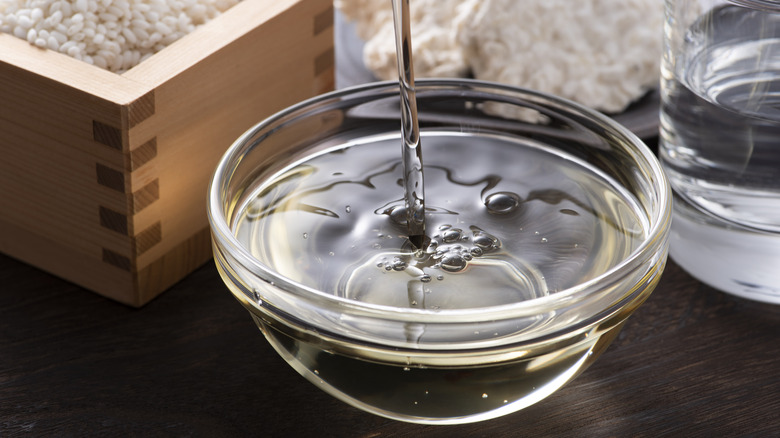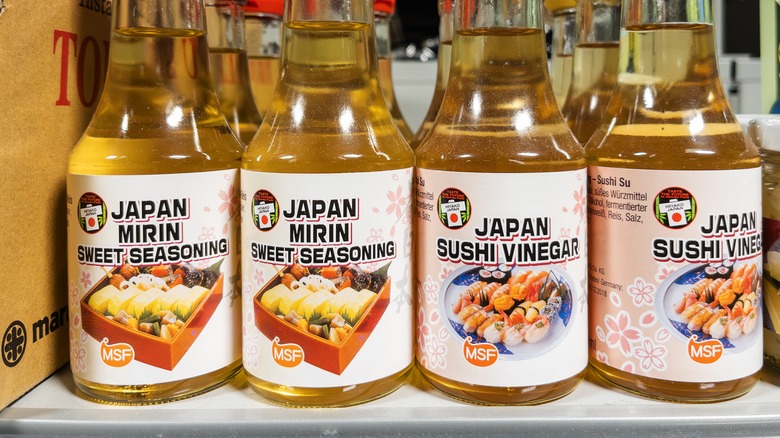How To Substitute Mirin With Pantry Staples You Probably Already Have
If you're a sushi lover, a repeat visitor at your local Chinese take-out spot, or regularly sample the best of Asian condiments, you've likely tasted mirin. It is one of the most used ingredients in Asian cuisine, and for good reason. In fact, in Japan, mirin is considered one of the top five condiments to spruce up a dish. Mirin is a rice wine vinegar and is made through a process of fermentation. It does contain alcohol (about 14%) but the majority of it evaporates during cooking, so you won't get that strong boozy flavoring. While it forms part of the holy grail in Asian kitchens, there may be moments when you need to swap it out of a recipe for dietary purposes or preferences, or you may have just run out of this special sauce and need to think creatively. Thankfully, there are several ways to substitute mirin and still enjoy your meal.
One popular swap is rice vinegar or white wine vinegar mixed with sugar. Mirin is known to have a naturally sweet and umami taste, so this pairing mimics that flavor well. This is the most similar-tasting alternative, the only difference being that rice vinegar and white wine vinegar contain more alcohol. Adding sugar to rice vinegar is especially important since mirin is significantly sweeter. Add about 1/2 a teaspoon of sugar for every tablespoon of rice vinegar to keep the flavors in balance.
More substitutes for mirin
You probably have even more mirin alternatives stashed away on your shelves that will add a burst of flavor to homemade fried rice or a dipping sauce that you whip together. Traditionally, mirin is often swapped with Chinese cooking wine, called shaoxing, because of their similar flavors. As a rice wine, shaoxing is a pretty integral seasoning in Chinese cuisine because of its ability to add depth and vibrancy wherever it's added. If you regularly enjoy throwing together a rich and hearty stir-fry, then a bottle of shaoxing is likely in your pantry already (or at the top of your grocery list for your next visit).
If you're looking for a non-alcoholic alternative, reach for white grape juice. Swapping mirin for white grape juice makes sense since wine is made from grapes which means the flavors won't be hugely different. The sophisticated flavor remains while eliminating any alcoholic elements. If you need a simpler booze-free alternative, another fruit juice option is apple juice.
For gluten-free diners, premium sake makes for a great stand-in (unfortunately not all sake is 100% gluten-free so premium sake is the best option). Sake is also a Japanese rice wine so it's an obvious choice if you want an almost unnoticeable swap. Sake does contain slightly lower levels of sweetness and higher levels of alcohol than mirin, but it offers that deep flavor that is just as hard-hitting when paired well.


